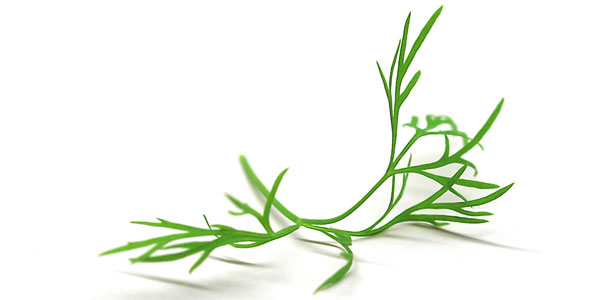
Often when we think of dill, the first thing that comes to mind is pickles. However, its fresh taste makes it perfect for a variety of dishes including fish, soups and salads. Many herb gardeners include dill in their gardens both for its beauty and unique taste. With the right steps, dill is quite easy to grow, here’s what you need to know.
Before You Plant
Find a Suitable Place:
- Dill plants can grow quite large, ranging from 2-3 feet high, so plan accordingly, especially if dill is part of a decorative garden or landscape.
- Dill is an annual herb and will have to be replanted each year. This makes it flexible for planting as you can change your location each year if necessary.
- Dill can be grown almost anywhere. It can tolerate wet or dry areas and rich or poor soil. These plants can even be grown in water using hydroponics!
- An area with adequate drainage and full sun is preferable for the best plant growth.
Prepare the soil:
- Dill with grow in nearly any soil, but certain soil conditions will help yield a healthier, more productive plant.
- The soil should be well-worked and moderately rich. This can be achieved by mixing in rotted compost or organic material.
- The pH level of the soil can be fairly acidic, as low as 5.5 all the way up to 7.5. Soil testing kits are available through your local garden supply or home improvement store.
Planting Dill
What You Will Need:
- Dill seeds
- Prepared soil
- Fertilizer
How to Plant Dill:
- Dill seeds should be sown after the last frost.
- Properly prepare the soil before planting.
- Space rows approximately 12 inches apart.
- Scatter the seeds along the ground and cover lightly with a small layer of soil. Be cautious not to place the seeds too deep, about 1/4 inch should be sufficient.
- Water thoroughly immediately after planting and keep moist until plants begin to sprout.
- Once seedlings have developed, thin plants to 9 inches apart.
- Fertilizer once or twice during the growing season with an all-purpose fertilizer.
- During dry spells it will be necessary to water your plants once or twice a week.
Growing/Harvesting Dill
Both the leaves as well as the seeds of the dill plant can be harvested for use. The dark leaves are called dill weed and can be used for seasoning, however, the young, tender leaves often are more flavorful. Harvesting will need to be done often as this plant grows quickly.
What You Will Need:
- Garden clippers or scissors
Steps for Maintenance and Harvesting:
- Harvest leaves by cutting with scissors once they reach mature size to use with many dishes including cucumber dishes, salads, soups, fish and dips.
- Leaves can be cut and used fresh or frozen in Ziploc bags for future use.
- If you wish to harvest seeds (a must for homemade pickles!), leave the plant untrimmed to allow flowers to form.
- Flower heads will fade into seed pods and should be removed once the seed pod turns brown and has died. Remove each head and place on a wire rack to dry. Place a tray or bag underneath to catch any seeds that may fall throughout the drying process. When the heads are completely dry, shake gently to remove any remaining seeds.
Additional Tips and Advice
- Since the leaves of the dill plant are eaten, avoid using any pesticides or sprays. If pests become a problem, try an organic treatment. Be sure to check the label carefully.
- Chewing a few dill seeds can help to eliminate bad breath
- Dill can be used for helping relieve colic in children.
- Mix 1-2 teaspoons of dried seed with boiling water to make dill tea. It’s not only tasty, but helps control flatulence as well.
- Place a few leaves in a jar of vinegar to create dill vinegar.
Related Posts
No related posts.